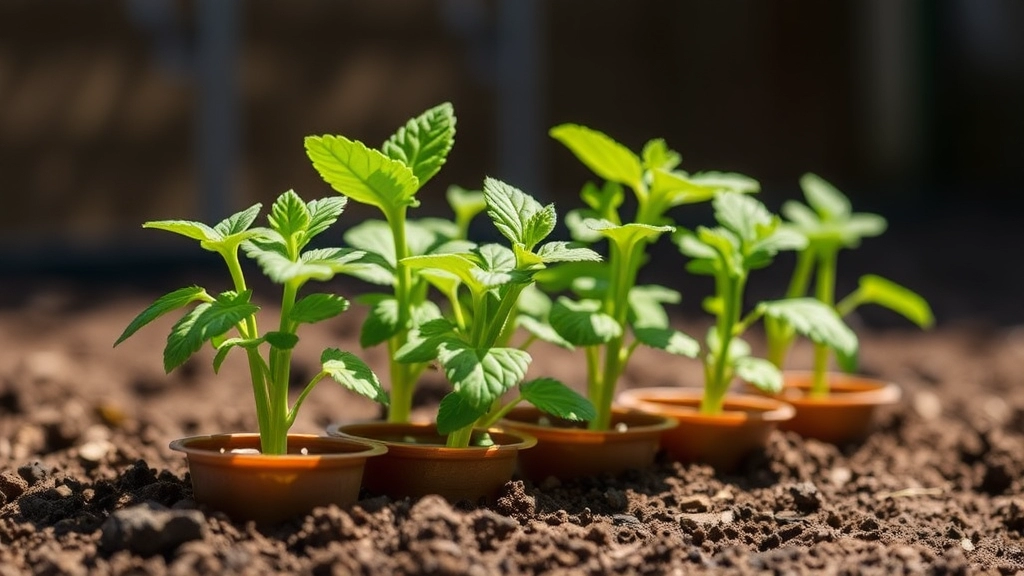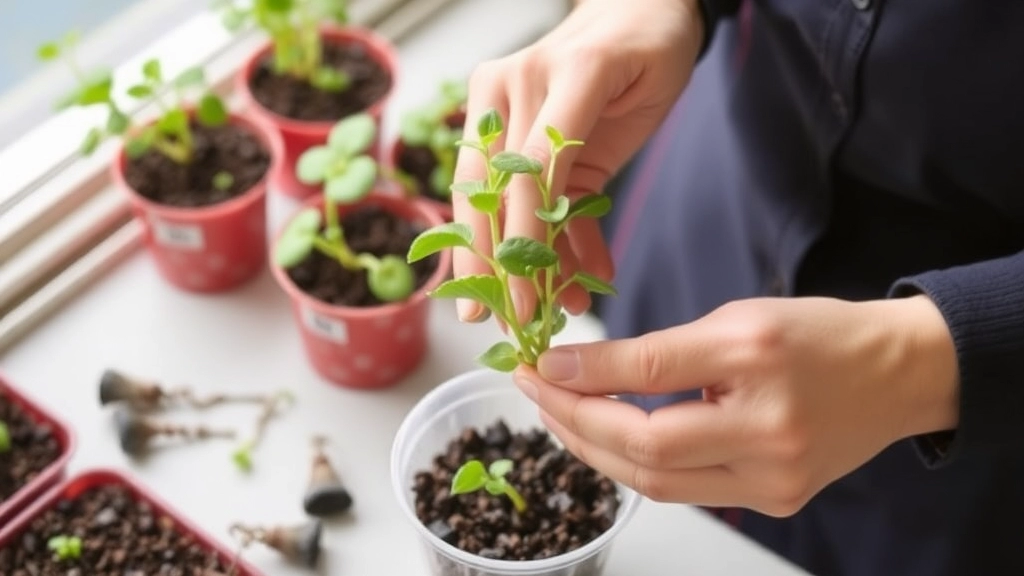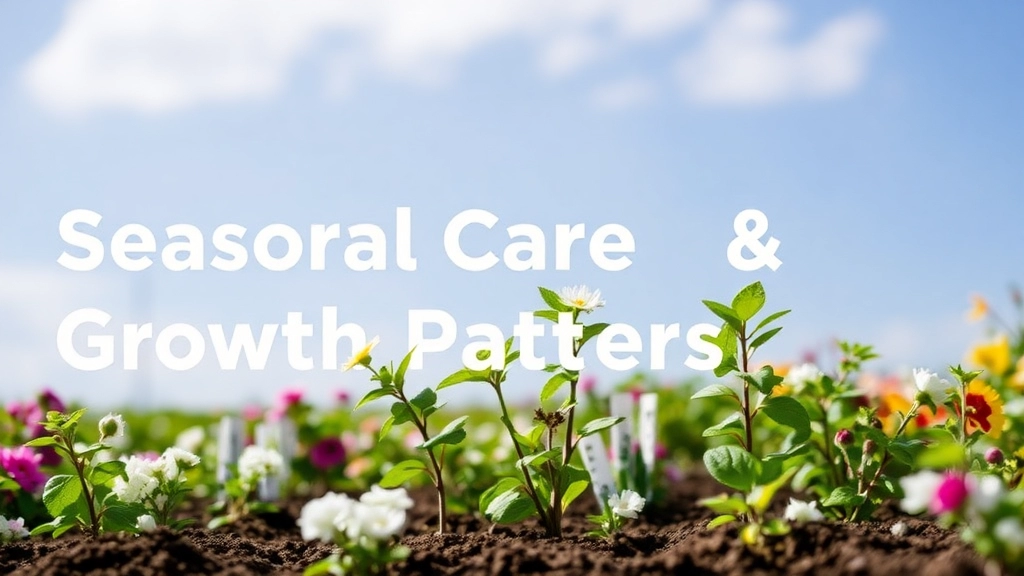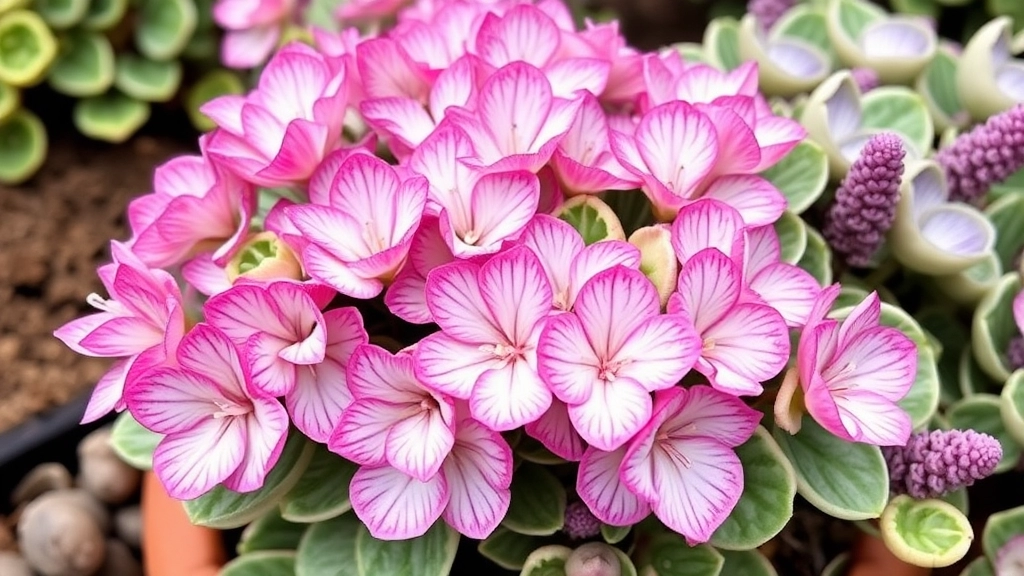Kalanchoe Lavender Scallops Variegated
If you’re keen on adding a splash of colour and unique texture to your garden or home, the Kalanchoe Lavender Scallops Variegated is a fantastic choice. This succulent stands out with its striking variegated foliage and lavender hues, making it a popular pick among plant enthusiasts. Whether you’re looking to learn more about its care or considering adding it to your collection, we’ve got you covered.
Care Requirements
Understanding the specific needs of the Kalanchoe Lavender Scallops Variegated is crucial for its optimal growth. From light and temperature requirements to watering and fertilisation tips, we’ll guide you through everything you need to know.
Topics to Explore
- Light and Temperature Requirements
- Watering Tips
- Fertilisation Techniques
- Propagation Methods
- Common Pests
Plus, we’ll delve into propagation techniques and common pests to watch out for, ensuring your plant thrives in any environment.
Characteristics and Appearance of Kalanchoe Lavender Scallops Variegated
When considering the addition of plants to your home or garden, the Kalanchoe Lavender Scallops Variegated often raises questions about its unique characteristics and striking appearance.
This delightful succulent boasts a stunning visual appeal that captivates both novice and experienced gardeners alike.
Key Features:
- Leaf Shape: The leaves are scalloped and have a wavy, ruffled edge, creating an intricate silhouette.
- Colouration: Its variegated leaves display a mesmerizing blend of soft lavender and creamy white, which adds a touch of elegance to any space.
- Size: Typically, the plant grows to about 30 cm in height, making it a perfect fit for both indoor pots and outdoor landscaping.
- Flowers: During its blooming season, Kalanchoe Lavender Scallops Variegated produces clusters of small, tubular flowers that can vary in colour, often showcasing shades of pink or yellow.
The combination of these characteristics makes the Kalanchoe Lavender Scallops Variegated not just a plant, but a statement piece. For those interested in more detailed care instructions, you can refer to the Ultimate Guide to Growing and Caring for Succulent Plant Kalanchoe. Additionally, if you are curious about other varieties with unique features, check out our Comprehensive Kalanchoe Species List for Gardeners.
II. Light, Temperature, and Soil Requirements

So, you’ve got your Kalanchoe Lavender Scallops Variegated, and now you’re wondering how to keep it thriving, right?
Light Needs
First things first, let’s talk about light. This beauty loves bright, indirect sunlight.
- Ideal Spot: A south or west-facing window is perfect.
- Avoid Direct Sun: Too much direct sunlight can scorch those lovely leaves.
- Signs of Insufficient Light: If the leaves start to stretch or lose their vibrant colours, it’s a sign they need more light.
Temperature Preferences
Next up is temperature. Kalanchoes are pretty chill but have their preferences.
- Ideal Range: They thrive between 18°C and 24°C (65°F to 75°F).
- Watch Out for Cold: Keep them away from drafts or temperatures below 10°C (50°F). They’re not fans of the cold!
Soil Requirements
Now, let’s dig into soil. You can’t just plant them in any old dirt.
- Well-Draining Soil: A cactus or succulent mix works wonders.
- pH Level: Aim for a slightly acidic to neutral pH (around 6.0 to 7.0).
- Pot Choice: Make sure your pot has drainage holes to prevent waterlogging.
Watering and Fertilization Tips for Optimal Growth
When it comes to nurturing your Kalanchoe Lavender Scallops Variegated, understanding its watering and fertilization needs is crucial for achieving vibrant growth and stunning foliage.
Propagation Techniques: Cuttings and Plantlets

When it comes to expanding your collection of Kalanchoe Lavender Scallops Variegated, propagation is an exciting and rewarding process. Many enthusiasts often wonder about the best methods to grow new plants from their existing ones.
Propagating Through Cuttings
One of the most straightforward techniques is using cuttings. Here’s how to do it:
- Select a Healthy Stem: Choose a stem that is healthy and has several leaves. This ensures the cutting has enough energy to root successfully.
- Make the Cut: Using clean, sharp scissors, cut a stem about 10-15 cm long.
- Remove Lower Leaves: Strip off the lower leaves, leaving a few at the top. This helps focus energy on root development.
- Allow to Callus: Place the cutting in a dry, shaded area for a few hours or overnight. This step prevents rot when planted.
- Plant the Cutting: Insert the cutting into a well-draining soil mix. A cactus or succulent mix works well.
- Water Sparingly: Lightly water the soil after planting. Keep it moist but not soggy, as excess moisture can lead to rot.
Propagating Through Plantlets
Kalanchoe Lavender Scallops Variegated is also known for producing plantlets, or offsets, which can be easily separated and replanted. Here’s how to do it:
- Identify Offsets: Look for small plantlets growing at the base of the parent plant.
- Gently Remove: Carefully separate the plantlet from the parent, ensuring some roots remain attached.
- Replant: Place the plantlet in a small pot with well-draining soil.
- Water and Care: Water lightly and provide bright, indirect light to encourage growth.
Tips for Successful Propagation
- Timing: The best time to propagate is during the growing season (spring and summer) when the plant is most active.
- Environment: Maintain a warm environment to encourage root development. A humidity dome can help if you’re in a dry climate.
- Patience: Rooting can take a few weeks, so be patient and monitor the moisture levels.
Common Pests and Diseases and How to Prevent Them
As we delve deeper into caring for your Kalanchoe Lavender Scallops Variegated, it’s essential to address the common pests and diseases that can threaten its health.
Understanding Pests and Diseases
Kalanchoe plants can be susceptible to a variety of pests and diseases. Here are some of the most common culprits:
- Mealybugs: These small, white, cotton-like insects often hide in leaf axils and on stems. They can cause leaf drop and stunted growth.
- Aphids: Tiny and green, aphids suck the sap from the plant, leading to yellowing leaves and distorted growth.
- Spider Mites: These minuscule pests thrive in dry conditions and can create fine webbing on the leaves, causing them to appear speckled or discoloured.
- Fungal Diseases: Root rot and leaf spot diseases can occur if the plant is overwatered or if humidity levels are too high.
Prevention Strategies
Preventing these issues is far easier than dealing with them once they arise. Here are some effective strategies:
- Regular Inspections: Routinely check your plant for any signs of pests or disease. Early detection is key.
- Proper Watering: Ensure you’re not overwatering. Allow the soil to dry out between watering sessions to prevent root rot.
- Good Air Circulation: Place your Kalanchoe in a well-ventilated area. This discourages fungal growth and keeps pests at bay.
- Neem Oil: A natural pesticide, neem oil can deter many pests without harming your plant. Spray it on affected areas as needed.
- Isolation: If you notice any signs of pests, isolate the affected plant to prevent the spread to other plants.
For more detailed information on how to handle specific issues, check out our guide on why Kalanchoe leaves dry out. Additionally, if you’re experiencing problems with drooping flowers, our article on why Kalanchoe flowers droop might be helpful.
Seasonal Care and Growth Patterns

So, you’ve got your Kalanchoe Lavender Scallops Variegated thriving, and you’re wondering how to keep it looking fab all year round?
Understanding Seasonal Changes
Plants like Kalanchoe have their own rhythm. Knowing how they behave with the seasons can make all the difference.
- Spring: This is when your plant will start to wake up. You’ll notice new growth and maybe even some flowers.
- Care Tip: Increase watering as the weather warms up, but don’t drown it.
- Summer: Your Kalanchoe will be in full swing. It loves the sun, but too much direct light can scorch those lovely leaves.
- Care Tip: If it’s blazing, consider moving it to a spot with bright, indirect light.
- Autumn: As temperatures drop, your plant will slow down. It’s a time for rest.
- Care Tip: Cut back on watering. The plant doesn’t need as much moisture during this time.
- Winter: This can be a tricky season. Kalanchoe prefers a warmer environment, so keep it cozy.
- Care Tip: If your home gets chilly, consider moving it away from drafts.
Growth Patterns to Watch For
- Leaves: Healthy leaves are a sign of a happy plant. If they start to droop or yellow, it’s time to reassess your care routine.
- Flowers: If you want blooms, a little extra light during the shorter days can help.
Uses in Landscaping and Indoor Decoration
Are you wondering how to incorporate Kalanchoe Lavender Scallops Variegated into your home or garden? This stunning succulent is not just a pretty face; it offers a myriad of uses that can enhance both indoor and outdoor spaces.
Landscaping Applications
Kalanchoe Lavender Scallops Variegated thrives in various landscaping settings. Here are some ideas to consider:
- Rock Gardens: Its unique scalloped leaves and vibrant colours make it a standout in rock gardens.
- Borders and Edging: Use it to create attractive borders that define pathways or flower beds.
- Container Displays: Combine it with other succulents in decorative pots for a striking visual effect.
- Ground Cover: In warmer climates, it can serve as an excellent ground cover, adding texture and colour.
Indoor Decoration Ideas
When it comes to indoor decoration, Kalanchoe Lavender Scallops Variegated truly shines. Here’s how to make the most of it:
- Table Centrepieces: Its vibrant foliage can brighten up dining or coffee tables.
- Windowsills: Place them on windowsills where they can soak up natural light while adding a touch of greenery.
- Office Spaces: A small pot on your desk can boost your mood and productivity.
- Hanging Planters: Consider using hanging planters to showcase its cascading growth habit.
Benefits of Kalanchoe Lavender Scallops Variegated
In addition to its aesthetic appeal, this succulent offers several benefits:
- Low Maintenance: Perfect for busy lifestyles, it requires minimal care.
- Air Purification: Like many plants, it helps improve indoor air quality.
- Versatile: Its adaptability makes it suitable for various environments.
For more detailed care instructions, you might find our Kalanchoe Bracteata Silver Spoons Care and Propagation Guide useful. Additionally, if you’re interested in different varieties, check out our Kalanchoe Succulent Identification Guide.
FAQs for Kalanchoe Lavender Scallops Variegated
What kind of light does Kalanchoe Lavender Scallops Variegated need?
This plant thrives in bright, indirect sunlight. A south or west-facing window is ideal. Avoid direct sunlight, as it can scorch the leaves.
What is the ideal temperature range for this plant?
Kalanchoe Lavender Scallops Variegated prefers temperatures between 18°C and 24°C (65°F to 75°F). Keep it away from drafts and temperatures below 10°C (50°F).
What type of soil is best for Kalanchoe Lavender Scallops Variegated?
A well-draining soil mix, such as a cactus or succulent mix, is ideal. Aim for a slightly acidic to neutral pH (around 6.0 to 7.0). Ensure your pot has drainage holes to prevent waterlogging.
How can I propagate Kalanchoe Lavender Scallops Variegated?
There are two main methods: cuttings and plantlets. For cuttings, select a healthy stem, make a clean cut, allow it to callus, and then plant in well-draining soil. For plantlets, gently remove offsets from the parent plant and replant them in a small pot with well-draining soil.
When is the best time to propagate this plant?
The best time to propagate is during the growing season, which is spring and summer, when the plant is most active.
What should I watch for in terms of seasonal changes?
In spring, increase watering as the plant wakes up. In summer, provide bright, indirect light. In autumn, reduce watering as the plant slows down. In winter, keep the plant warm and away from drafts.
How do I know if my plant is getting enough light?
If the leaves start to stretch or lose their vibrant colors, it’s a sign they need more light. Healthy leaves indicate a happy plant.
What should I do if my plant’s leaves start to droop or yellow?
Drooping or yellowing leaves may indicate a need to reassess your care routine. Check for proper light, temperature, and watering practices.
Can I encourage my Kalanchoe to bloom?
Yes, providing a little extra light during the shorter days can help encourage blooms.
What are some tips for successful propagation?
Maintain a warm environment, use a humidity dome if necessary, and be patient as rooting can take a few weeks. Ensure you water sparingly to avoid rot.
References
-
Growing Kalanchoe Lavender Scallops: Light, Temperature, and Soil Requirements
-
Kalanchoe Propagation Techniques: Cuttings and Plantlets
-
Seasonal Care and Growth Patterns for Kalanchoe
